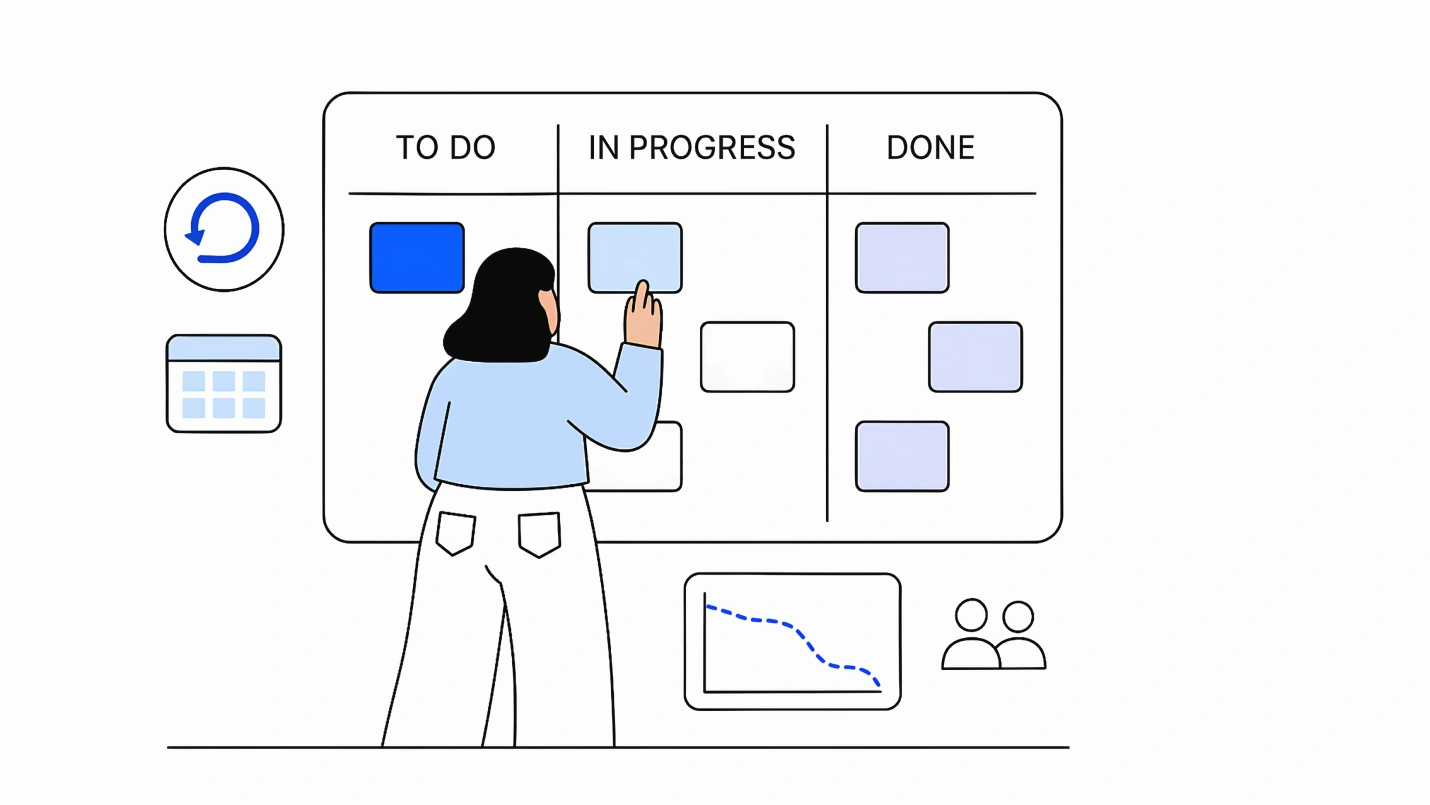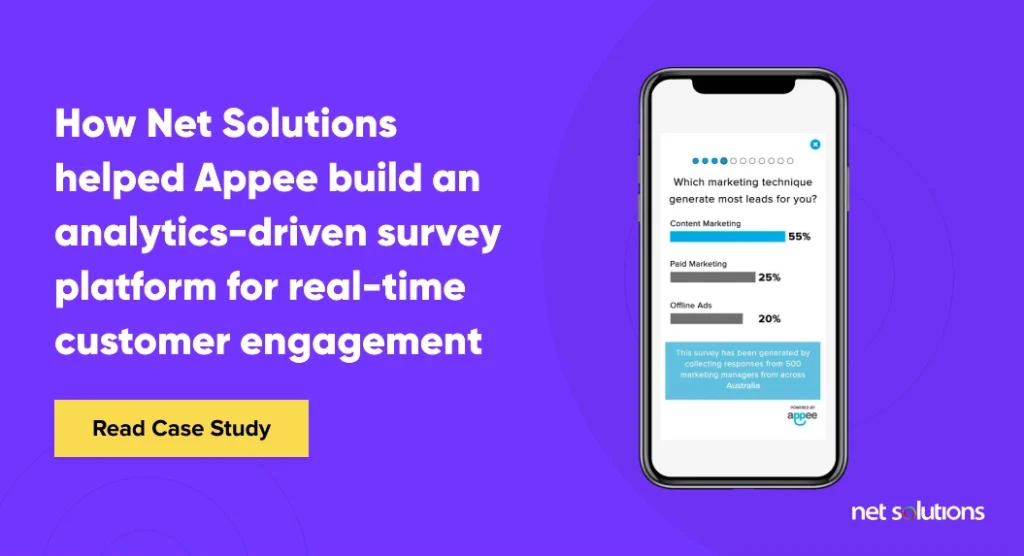Summary: Agile project management is one of the most popular and effective approaches to building software flexibly that meet ever-changing customer requirements. Understanding the benefit of Agile project management, the core values that drive it, and the principles that guide it can help you implement a strong, effective Agile program. This post will also help you understand different Agile frameworks, typical Agile roles, and some common challenges businesses must face and overcome when implementing Agile project management in their organizations.
Software product development presents many unique challenges compared to creating physical products like cars or cell phones. One major challenge is that customer requirements change quickly, and the market demands in Q2 may differ from what they demanded in Q1 of the same year.
The rapidly changing nature of the industry requires a flexible approach to managing software development projects. Rather than rigidly prescribing the features a product will have and refusing to deviate from that plan, the industry has created techniques for developing incredibly flexible software, allowing product teams to shift their focus and prioritize the essential features in their backlog at any given time.
One of the most effective techniques for accomplishing this level of flexibility is Agile project management. This blog post will explain the guiding principles behind Agile, how your organization can benefit from this approach, and what you can do to ensure a successful Agile implementation.
“Sometimes, when you innovate, you make mistakes. It is best to admit them quickly and get on with improving your other innovations.”– Steve Jobs
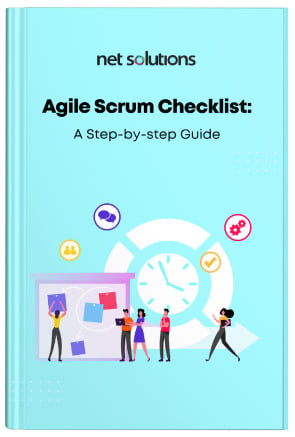
We respect your privacy. Your information is safe.
What is Agile Project Management?
Agile project management is a strategic, iterative approach to managing a product’s development throughout its entire lifecycle, from conception to release to product updates.
First, an iterative approach works in small increments, allowing product professionals to get quick input from existing users, stakeholders within the company, and the broader market along the way. This allows product teams to adjust their approach based on feedback and changing market conditions.
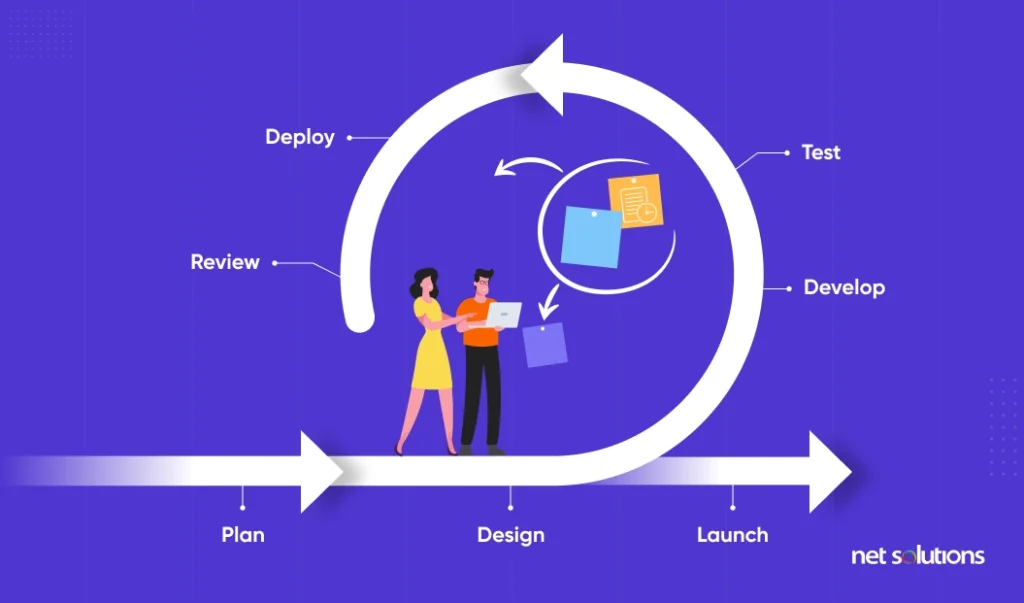
The Agile approach comes in many different forms or frameworks (e.g., Scrum, Kanban, Lean UX), but each approach encourages the same core values like trust, flexibility, employee empowerment, and collaboration.
How Agile Project Management became the dominant approach?
Agile arose in 2002 as a response to the Waterfall approach to software development, which is a linear, top-down methodology. Waterfall parameters and customer requirements are decided in the beginning, and agile developers build that software based on a master plan. Software projects can take a long time to develop, and by the time a team completes a long project, customer requirements have often radically changed.
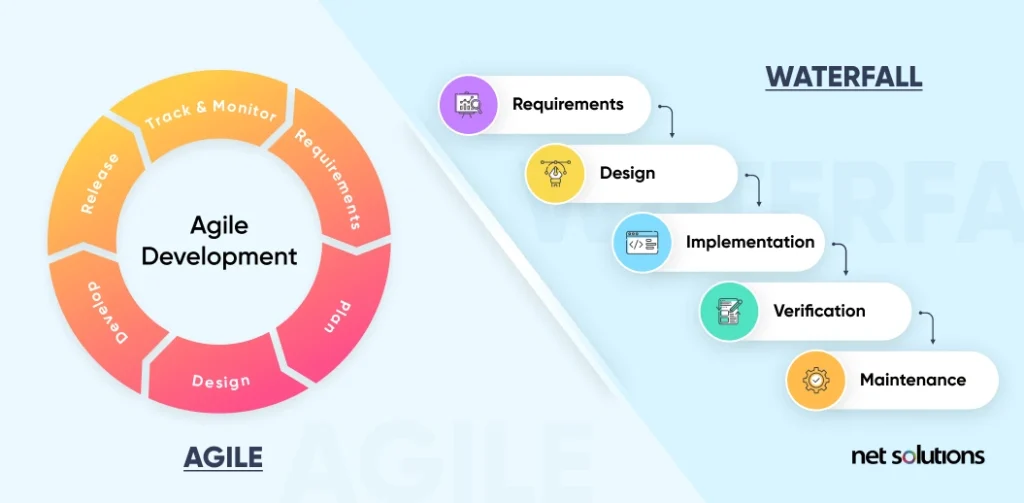
Some organizations still use Waterfall for software development, but Agile is the more popular approach. Check out this blog post about the differences between Agile and Waterfall to determine which is right for you.
Who uses Agile Project Management?
Companies are beginning to use Agile product management outside the tech space, but it started in tech, and it’s ideally suited for software creation because software is so flexible. Applying Agile to physical product development is much more difficult because it’s much harder to modify a car’s design, for example, in the middle of the manufacturing process.
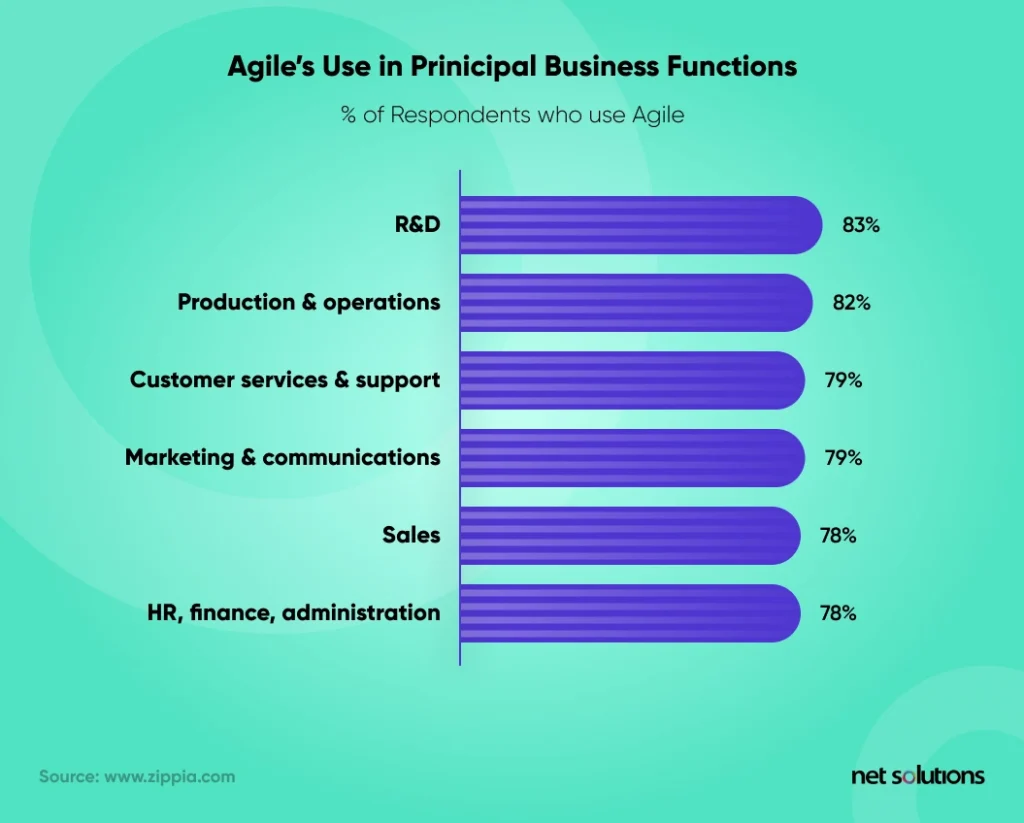
Benefits of Agile Project Management
Agile project management has many benefits beyond flexibility—although the flexibility in meeting customer requirements is a major one. Here are some of the powerful benefits Agile Project Management has to offer.
- Risk reduction: An Agile approach increases the odds that a company will meet its customers’ requirements without wasting money and countless hours implementing features that miss the mark.
- Greater error detection: Agile encourages quick quality checks throughout the development processes, ensuring built-in quality at every stage.
- Clear metrics guide decision-making: Agile includes regular data collection and analysis that helps guide decision-making and improve quality and efficiency. That involves evaluating things like Lead Time, Cycle Time, and Throughput. It also encourages greater transparency at every level.
- Improved transparency and collaboration: When done correctly, Agile project management creates a transparent system where everyone involved can visualize where a project is headed and any shifts in strategy. Agile teams accomplish this through regular standup meetings, post-mortems following each sprint or stage of development, and clear roadmaps.
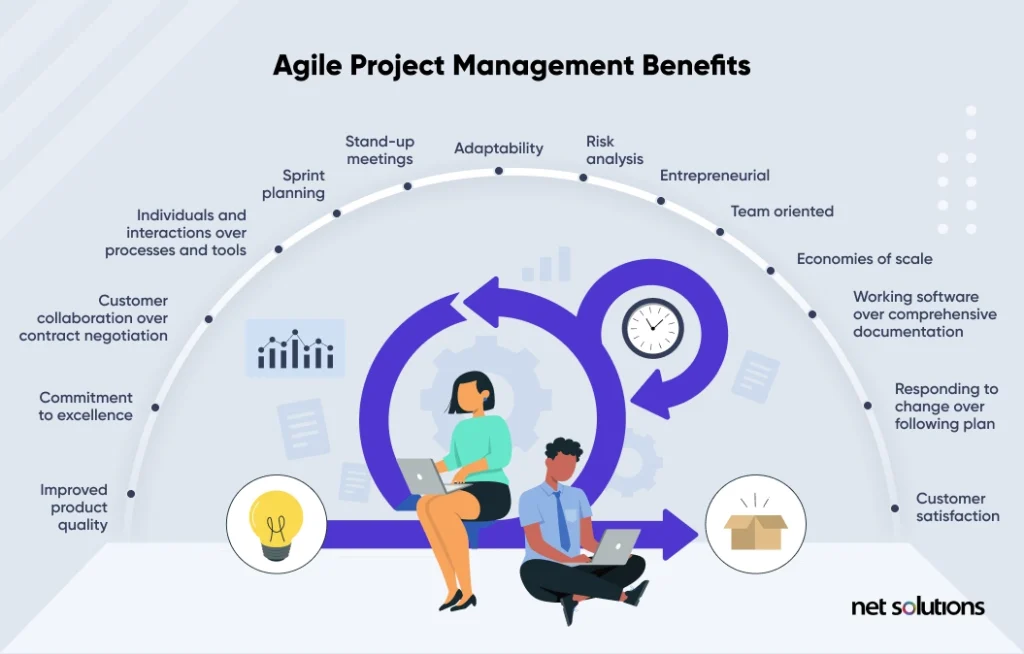
Agile’s 4 Core Values
Four core principles or values guide agile. These values were laid out in the original Agile Manifesto written by the creators of Agile, and they inform every element of Agile Project management.
- Individuals and interactions over processes and tools: While processes and tools help product teams implement Agile project management, they should be distinct from the approach. Roadmaps, metrics, and tools are secondary to collaboration and communication between employees and departments. Those interactions guide teams to create superior products.
- Working software over comprehensive documentation: Although it’s important to document processes, organizations can sometimes go overboard with documentation and lose themselves in the details. Agile reminds us to focus on the ultimate goal of quality software.
- Customer collaboration over contract negotiation: The ultimate goal of Agile is to serve the customer by creating software that meets their needs and exceeds their expectations. Customer collaboration is vital to Agile, preventing product teams from losing themselves in detailed deliverables outlined in contracts.
- Responding to change over following a plan: Flexibility is at the core of Agile project management. Customer requirements change, markets change, and priorities shift. Agile encourages teams to modify their focus accordingly rather than rigidly following a prescribed plan.
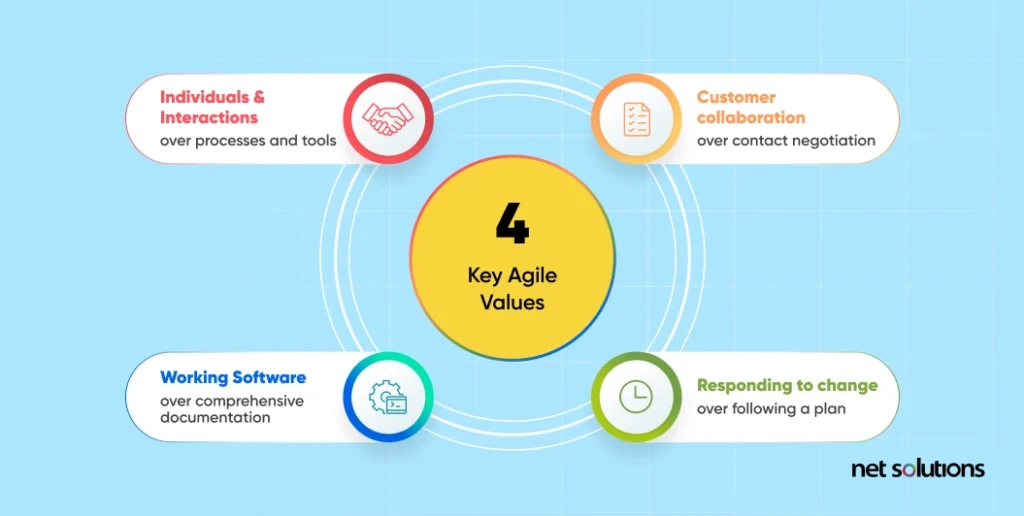
12 Agile Project Management Principles
In addition to the four core values, the Agile manifesto included the following principles.
- Satisfy the customer through early and continuous delivery.
- Welcome change, as flexibility improves a team’s ability to meet customer requirements
- Deliver frequently by providing new updates regularly.
- Work together in a supportive, collaborative environment with regular feedback.
- Trust and support are vital to an Agile culture.
- A face-to-face conversation is ideal for development teams that want to optimize
communication (although today, Zoom calls work quite well!) - Working software is the primary measure of progress and success.
- Sustainable development is essential, and team members should be able to maintain a
steady pace without getting worn out - Continuous attention to technical excellence and solid design is a must.
- Maintaining simplicity reduces unnecessary work and produces excellent software.
- Self-organizing teams produce the best architecture, requirements, and designs.
- Reflecting and adjusting allows teams to improve the quality of work they deliver and meet customer requirements.
When organizations respect these principles, they’re far more likely to create excellent products and help build a loyal customer base. This increases lifetime revenue and improves their odds of long-term success.
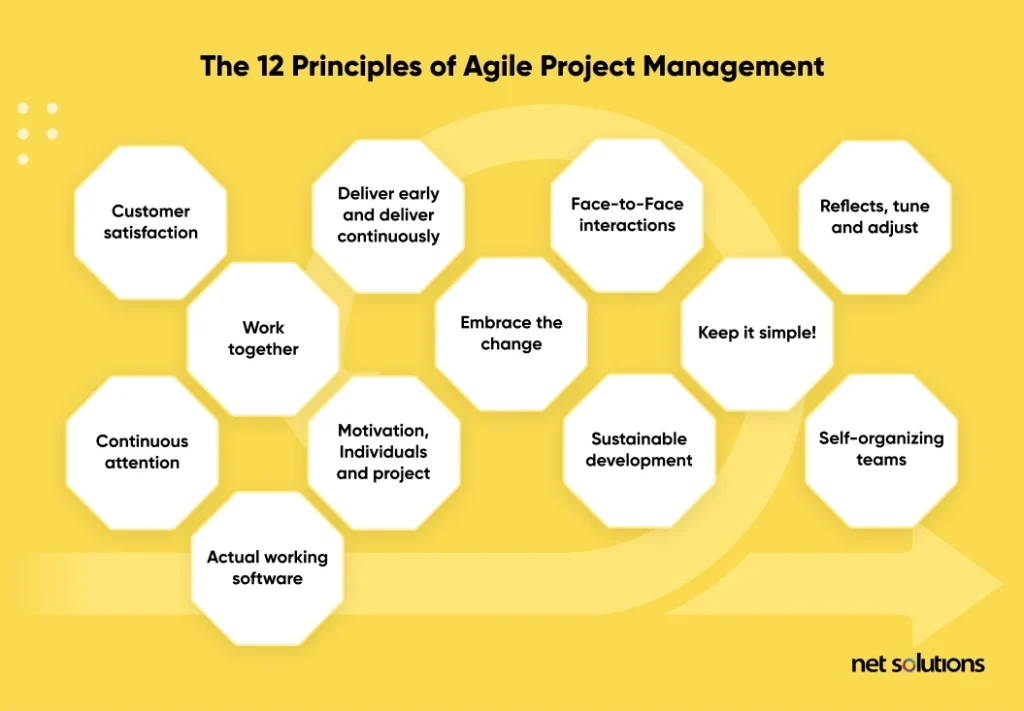
Important Agile Team roles
In this broad overview of Agile project management, it would be impossible to dive into all the different roles within each Agile framework. That’s because Kanban Agile, for example, includes a variety of roles you’ve probably never heard of if you’ve never worked within this framework.
With this in mind, let’s go ahead and break down four key roles in Agile Scrum, the most popular Agile framework among all of them. Just know that these roles will vary if you adopt a different Agile framework.
1. Scrum Master
The Scrum Master plays a key role in Agile Scrum project management, supporting and outlining the Agile process throughout the organization by identifying and defining customer requirements, setting the sprint schedule, collaborating with key stakeholders (including executives), holding standup meetings and post-mortems following each sprint, and more. The Scrum Master is the glue that binds Agile project management together.
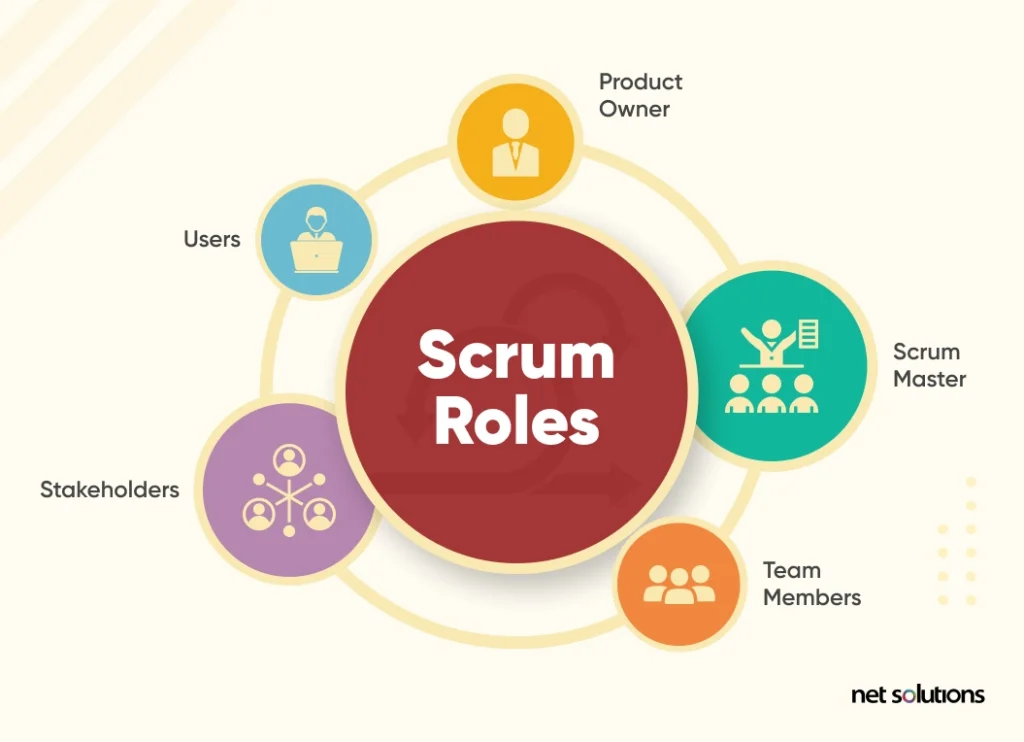
2. Project Owner
The Project Owner is ultimately responsible for guiding each development team toward success, working closely with the Scrum Master to ensure deliverables are met for each sprint.
3. Development Team Members
In Agile, development teams consist of small groups of developers with a flat hierarchy. The teams are generally given a great deal of autonomy to accomplish each sprint’s goals however they see fit.
4. Key Stakeholders
Stakeholders may include executives, business managers, data architects, portfolio managers, sales managers, and anyone directly connected to the product’s success.
Popular Agile Project Management methodology frameworks
As Agile project management grew in popularity over the past 20 years, many different flavors or frameworks developed around its core principles, values, and tenants. According to Digital Project Manager, there are over 50 Agile frameworks.
What follows is a brief introduction to some of the most popular Agile project management frameworks today.
1. Scrum
Scrum breaks software developments into sprints, assigning unique roles to team members such as Scrum Master and Product Owner (see above). Scrum is by far the most popular Agile framework, according to the latest State of Agile Report. The report found that 66% of Agile companies use Scrum, and if you include two main Scrum variants (ScrumBan and Scrum/XP), that number rises to an impressive 96%!
2. Kanban
Kanban comes from the Japanese word describing a signboard, and it traces its history back to Lean Manufacturing and Just-In-Time delivery. It makes heavy use of visuals to make sense of workflows and tasks.
3. Lean Software Development
Lean Software Development grew out of Lean Manufacturing, which focuses on eliminating waste and optimizing efficiency when building physical products at scale. It takes those manufacturing principles of the original Lean philosophy and adds flexibility unique to Agile software development.
4. XP
Extreme Programming (or XP for short) is similar to Scrum. Still, it tends to work in even shorter iterations, and it emphasizes XP engineering practices like test-driven development, automated testing, and refactoring.
5. Crystal
Crystal describes a collection of frameworks that emphasize communication, collaboration, and skills development. It includes various techniques to bring about greater discussion among teams.
6. Dynamic Systems Development Method (DSDM)
DSDM is an Agile methodology that, like Scrum, works in sprints to achieve flexibility and high-speed iteration. It emphasizes rapid, reversible delivery, collaboration, and continuous delivery.
7. Feature-Driven Development (FDD)
FDD Agile works in two-week periods and includes more structure than Scrum and other methodologies, with a strong emphasis on documentation. It begins with developing an overall model, then planning, designing, and building the product based on specific feature sets.
“Agile… is an attitude, not a technique with boundaries. An attitude has no boundaries, so we wouldn’t ask ‘can I use agile here’, but rather ‘how would I act in the agile way here?’ or ‘how agile can we be, here?’” – Alistair Cockburn
How to implement Agile Project Management
Implementing Agile project management is a comprehensive undertaking. It involves many steps, but the following five general steps will give you a bird’s eye view of what’s involved in Agile implementation.
Step 1: Create an Agile project vision statement
An Agile project vision outlines the product, why it should exist, and who you’re creating it for. It also identifies underlying market drives and serves as the north star for your efforts. This document will help guide design, development, quality assurance, marketing, and sales efforts.
Step 2: Analyze the roadmap for the product
A roadmap explores a product’s lifecycle for the foreseeable future, giving product teams a broad understanding of where the product is likely headed, the features customers want, and the timelines for implementation. Agile is flexible and iterative, so the roadmap will probably change. Understanding where it’s likely headed and how each upcoming sprint relates to the overall vision is essential.
Step 3: Map sprints
Mapping out agile sprints involves analyzing team capacity and skillset, planning sprint meetings, assigning ownership, and understanding how everyone’s work feeds into the big picture.
Step 4: Keep track of tasks with daily stand-ups
Daily standups usually last around 15 minutes, and they’re a key component of Agile because they help keep teams focused, resolve any roadblocks, and ensure smooth communication and collaboration.
Step 5: Carry out sprint reviews
Agile sprint reviews occur at the end of each sprint. They allow teams to assess the work performed and demonstrate to Product Owners and key stakeholders how they tackled the deliverables associated with that sprint.
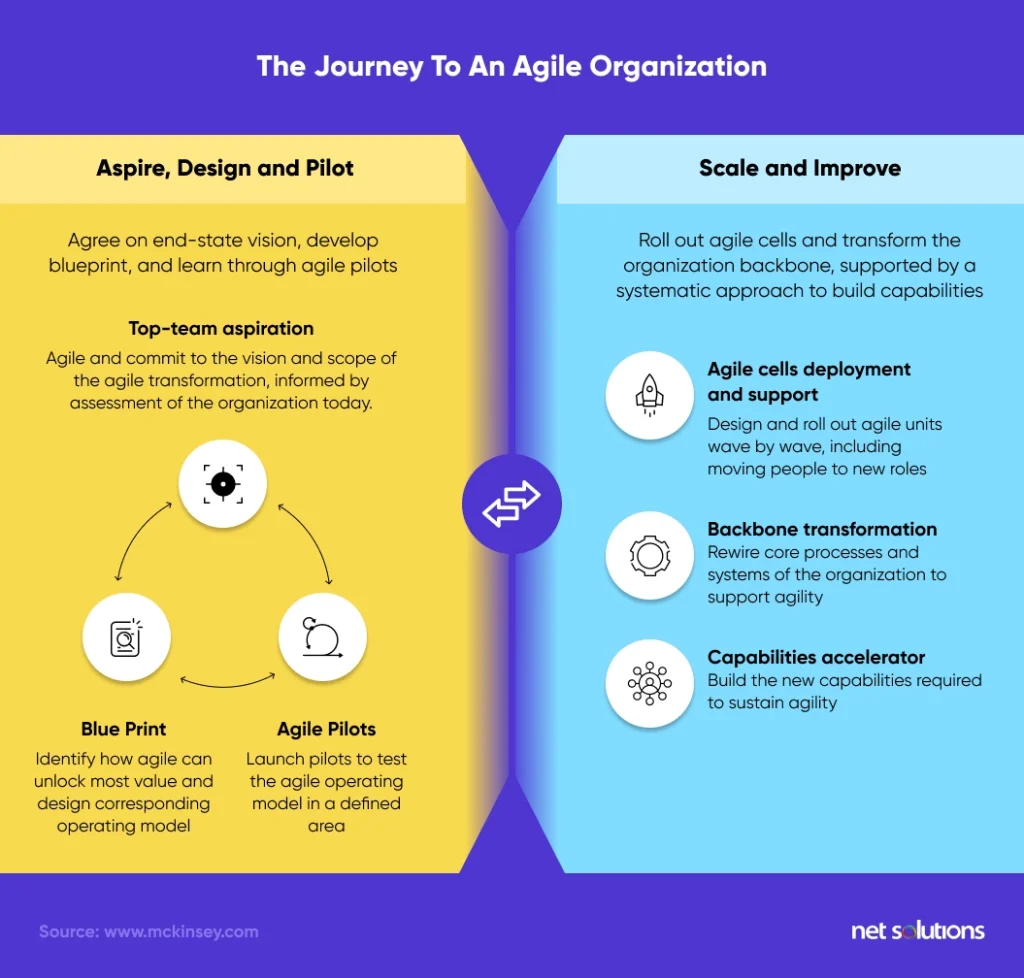
How to become an Agile organization
There are many paths to becoming an Agile organization. The following three tips will help guide your efforts.
- Hire the right people—those who have tangible experience implementing Agile (not just a theoretical understanding).
- Get key team members certified in Agile through an established certification program like PMI or AgilePM Foundation.
- Find the right project management tools, prioritizing flexible tools to adapt to your program’s needs. See below for some of our favorites here at Net Solutions.
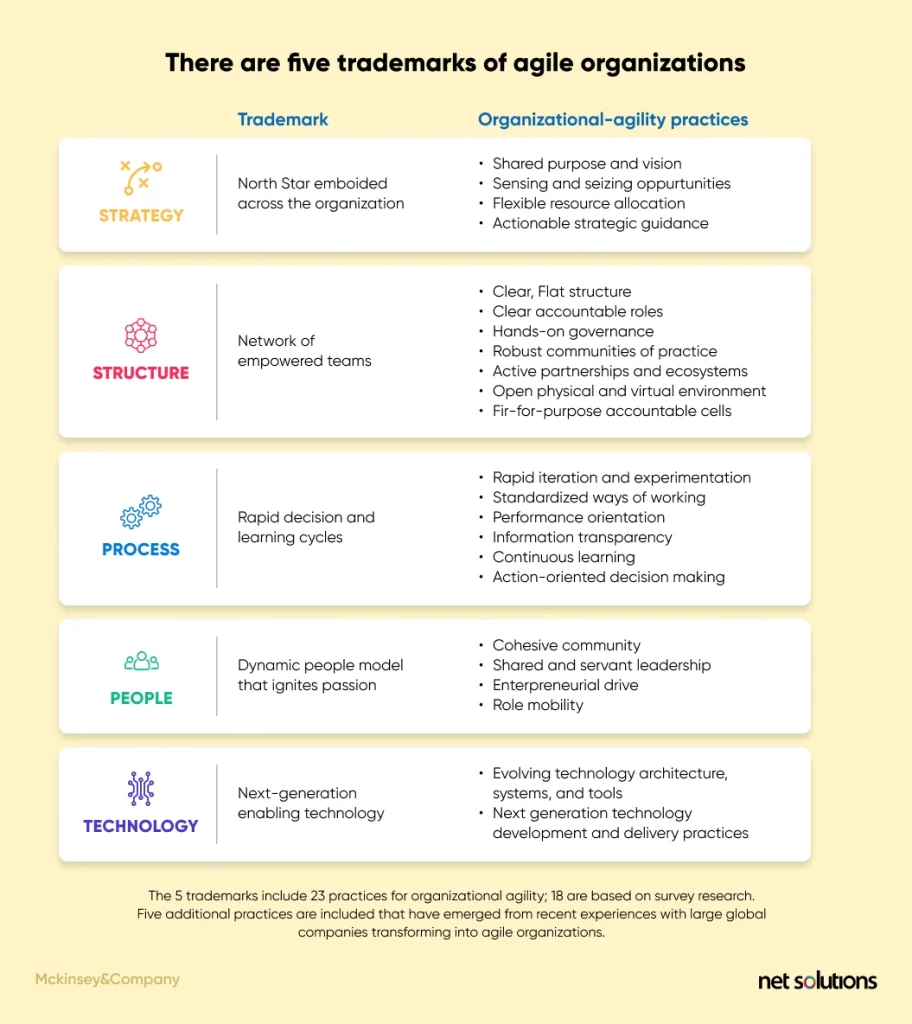
Common Agile Project Management challenges
To successfully implement Agile project management, it’s essential to understand some common challenges that Agile organizations face. The more you understand the common pitfalls, the easier it will be to spot and address them.
Common Agile project management challenges include:
- Obtaining proper funding in the initial stages, since the Finance department may struggle to see why every detail of the program and each feature’s business case has not been mapped out in advance. Given Agile’s flexible approach, extensive planning takes a back seat to flexibility, so Finance needs to understand this. It often helps to have an ally in the Finance department who can explain the Agile approach and champion your program.
- Insufficient planning can impact the success of Agile project management. Yes, Agile is known for flexibility, but clearly defining the goals of each sprint helps avoid “scope creep,” where teams waste time and effort on deliverables outside the goals of each sprint. Proper planning also helps everyone understand the big picture and maintain focus.
- Poorly defined job roles can throw a wrench in your Agile plans. Clear job roles empower Agile teams to take a flexible approach since they’ve eliminated the confusion of a haphazard strategy. In short, achieving flexibility in your approach requires more order and structure in other areas, or you end up with chaos.
Our favorite Agile Project Management tools at Net Solutions
At Net Solutions, we mainly use Jira (the current market leader for software development project management), Taiga (an open-source Project Management tool ), and Azure DevOps. Other popular tools include Trello, Zoho, Asana, Taiga, Kissflow, Basecamp, and Monday.com.
Each of these tools has advantages and disadvantages, so be sure to analyze your needs and choose the best platform for your organization and its approach to Agile.
How can Net Solutions help?
Net Solutions regularly uses Agile project management to design, develop, and improve software for our clients across various sectors. For example, we used Agile to develop Appee’s Minimum Viable products in just 14 weeks and to produce an Augmented Reality prototype for On-Demand Mobile that paved the way for a much-loved payment app.
We also used agile to create and improve Soaq’s enterprise video platform, an ever-evolving product that continues to impress customers with its growing list of cutting-edge features. Curious to see what Net Solutions can do for you? Contact our experts for quality Agile software development services and take your project to the next level.
Frequently Asked Questions
Waterfall is a more rigid, top-down approach to software creation that identifies all customer requirements upfront. In contrast, Agile is flexible and iterative, gathering regular feedback from customers and stakeholders. Scrum is one of many Agile frameworks, and it is the most popular. Scrum teams work in short sprints with regular reviews, and a Scrum Master keeps ties the whole strategy together.
The 5 phases of Agile Project Management are:
- Envision: Customer needs are analyzed and prioritized
- Speculate: Teams members break down high-level milestones into dynamic requirements set.
- Explore: Teams hash out what they hope to accomplish each day in a given sprint and what resources they need to achieve those goals.
- Adapt: Teams discuss and compare results based on the goals identified in the Explore phase.
- Close: At the end of each sprint, teams hold sprint reviews to identify the work they completed and how it fits into the larger product vision
There are countless examples of software products created using Agile, as Agile is the most popular project management system today. Google, IBM, Netflix, Facebook, and numerous other giants use Agile project management to build software products their customers love.
Three key elements of Agile are communication, teamwork, and metric-driven decision-making. These three traits help Agile practitioners produce top-notch products efficiently and cost-effectively.

